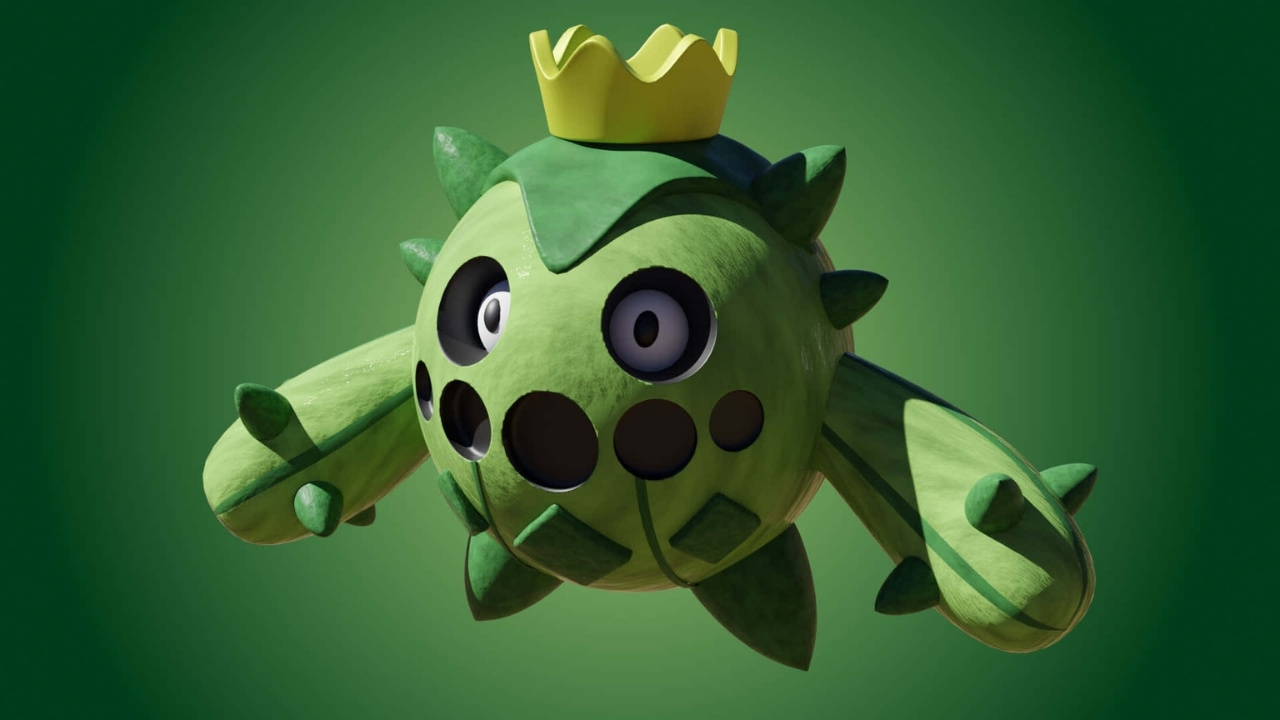
Cacnea, the Cactus Pokémon, is a fascinating creature from the Pokémon universe. Known for its prickly appearance and desert habitat, this Grass-type Pokémon has captured the hearts of many trainers. But what makes Cacnea truly special? Cacnea evolves into Cacturne, a formidable foe under the moonlight. Its unique abilities like Sand Veil and Water Absorb make it a versatile addition to any team. Did you know Cacnea can shoot needles from its body to fend off predators? Or that it thrives in arid environments, storing water in its body like a real cactus? Dive into these 33 intriguing facts about Cacnea and discover why this spiky Pokémon stands out in the vast world of Pokémon.
Cacnea's Origins and Design
Cacnea, a Grass-type Pokémon, has a unique design inspired by cacti. Let's explore some fascinating facts about this prickly creature.
-
Cacnea's name is a combination of "cactus" and "nea," which could be derived from "needle" or "spiny."
-
Introduced in Generation III, Cacnea first appeared in the Pokémon Ruby and Sapphire games.
-
Cacnea's design is based on a barrel cactus, known for its round shape and spines.
-
Cacnea's color is primarily green, reflecting its Grass-type nature and desert habitat.
-
Cacnea's eyes are yellow with black pupils, giving it a distinctive look.
Cacnea's Abilities and Moves
Cacnea has some interesting abilities and moves that make it a formidable opponent in battles.
-
Cacnea's primary ability is Sand Veil, which increases its evasion in a sandstorm.
-
Cacnea's hidden ability is Water Absorb, allowing it to regain HP when hit by Water-type moves.
-
Cacnea can learn a variety of moves, including Needle Arm, a signature move that can cause flinching.
-
Cacnea can also learn Dark-type moves like Sucker Punch, giving it an edge against Psychic and Ghost-type Pokémon.
-
Cacnea's move pool includes Grass-type moves like Seed Bomb and Energy Ball, making it versatile in battles.
Cacnea's Evolution and Growth
Cacnea evolves into a more powerful form, gaining new abilities and strengths.
-
Cacnea evolves into Cacturne starting at level 32.
-
Cacturne, its evolved form, is a Grass/Dark-type Pokémon, adding a new dimension to its abilities.
-
Cacturne's design is inspired by a scarecrow, reflecting its eerie, nocturnal nature.
-
Cacturne retains some of Cacnea's moves but gains access to more powerful attacks like Dark Pulse.
-
Cacturne's abilities include Sand Veil and Water Absorb, just like Cacnea.
Cacnea in the Pokémon Anime
Cacnea has made several appearances in the Pokémon anime, often showcasing its unique personality and abilities.
-
James from Team Rocket owned a Cacnea, which he caught in the Hoenn region.
-
Cacnea was known for its affectionate nature, often hugging James with its spiny body.
-
Cacnea's Needle Arm was frequently used in battles, demonstrating its strength and versatility.
-
Cacnea eventually left James to train with Gardenia, a Grass-type Gym Leader, to become stronger.
-
Cacnea's departure was an emotional moment, highlighting the bond between Pokémon and their trainers.
Cacnea's Habitat and Behavior
Cacnea's natural habitat and behavior provide insight into its lifestyle and survival strategies.
-
Cacnea is typically found in arid, desert regions where it blends in with the environment.
-
Cacnea stores water in its body, allowing it to survive long periods without rain.
-
Cacnea's spines serve as a defense mechanism against predators.
-
Cacnea is nocturnal, meaning it is more active during the night to avoid the harsh daytime heat.
-
Cacnea's diet consists mainly of small insects and other Pokémon, which it captures with its spiny arms.
Cacnea in Pokémon Games
Cacnea's presence in various Pokémon games has made it a favorite among trainers.
-
In Pokémon Mystery Dungeon, Cacnea can be recruited as a team member.
-
Cacnea appears in Pokémon GO, where it can be caught in the wild or hatched from eggs.
-
Cacnea is also featured in Pokémon Snap, where players can photograph it in its natural habitat.
-
Cacnea's shiny form has a different color palette, with its body turning yellow instead of green.
-
Cacnea can participate in Pokémon Contests, showcasing its beauty, coolness, and toughness.
Fun and Lesser-Known Facts
Here are some fun and lesser-known facts about Cacnea that might surprise you.
-
Cacnea's cry is a high-pitched sound that resembles the rustling of leaves.
-
Cacnea's height is 1'4" (0.4 meters), making it a relatively small Pokémon.
-
Cacnea's weight is 113.1 lbs (51.3 kg), which is quite heavy for its size.
The Final Prickly Points
Cacnea, with its desert-dwelling charm, offers more than just a prickly exterior. This Grass-type Pokémon is a fascinating blend of survival skills and unique abilities. From its origins in the Hoenn region to its intriguing evolution into Cacturne, Cacnea captures the imagination of Pokémon enthusiasts. Its ability to thrive in harsh environments, combined with its distinctive design, makes it a standout in the Pokémon world.
Whether you're a seasoned trainer or a newcomer, understanding Cacnea's traits can enhance your gameplay experience. Its moves like Needle Arm and Sand Attack add strategic depth to battles. Plus, its role in the anime and games highlights its versatility and appeal.
So, next time you encounter a Cacnea, remember these facts. They might just give you the edge you need in your Pokémon journey. Happy training!
Was this page helpful?
Our commitment to delivering trustworthy and engaging content is at the heart of what we do. Each fact on our site is contributed by real users like you, bringing a wealth of diverse insights and information. To ensure the highest standards of accuracy and reliability, our dedicated editors meticulously review each submission. This process guarantees that the facts we share are not only fascinating but also credible. Trust in our commitment to quality and authenticity as you explore and learn with us.
